In Russia in 1917, dressing like a revolutionary was the new black, & the new black was red. Red was the colour of revolution. Men & women, civilians or soldiers, people wore red ribbons to show which side they were on. Tied round the arm, threaded through a button hole, or pinned to a hat as a rosette, a red ribbon sent a clear visual message to your fellow citizens.

The drawing below was done by a Moscow schoolboy in February 1917. In his Demonstration near a Factory — “Free Speech!” (now in the Moscow State Historical Museum), note how everybody is wearing a red ribbon.
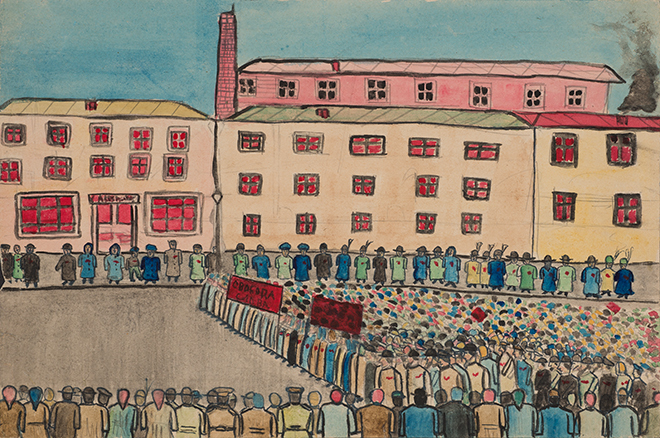
The Russian General, Peter Wrangel, recalled, “The first thing I noticed in St. Petersburg was the profusion of red ribbon. Everyone was decorated with it, not only soldiers, but students, chauffeurs, cab-drivers, middle-class folk, women, children, and many officers. Men of some account, such as old generals and former aides-de-camp to the Tsar, wore it too. I expressed my astonishment to an old comrade of mine at seeing him thus adorned. He tried to laugh it off, and said jokingly: “Why, my dear fellow, don’t you know that it’s the latest fashion?”.

In 1917, women were not yet sporting the iconic red headscarf so often seen in later Soviet posters & paintings (such as the one above from 1927). According to the Bolshevik revolutionary, Alexandra Kollontai, the working class women that helped bring about revolution mostly wore “a scarf on their head (very rarely, as yet, a red kerchief), a worn skirt, a patched winter jacket”.

Men and women dug out any red clothing they had so they could signal that they were a friend to revolution, not a foe. This was particularly critical for the workers and peasants in the Red Guards who were wearing an eclectic mix of ordinary working clothes and Tsarist Russian military uniforms. This drawing of ‘Masha the Bolshevik’, drawn by a school boy in Moscow back in 1917, shows a woman sporting a red blouse. I love the hands on hips, which say, “Don’t mess with Masha”!
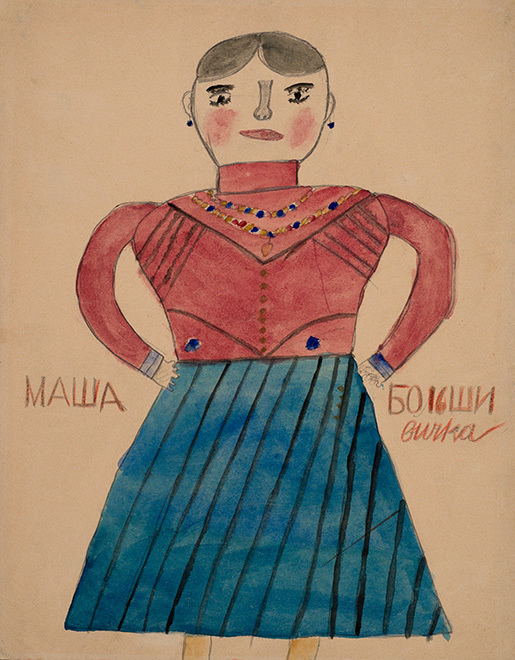
The Bolsheviks gave women new & equal rights such as divorce and maternity leave. Many working class women in Russia felt they had a very real stake in the Revolution and were optimistic about the new, more equal society that the Bolsheviks hoped to build. The poster below, from 1920, details some of the facilities that had become available to working women. The ‘red dress’ had now become commonplace in such posters, denoting a woman actively involved in building the new society.
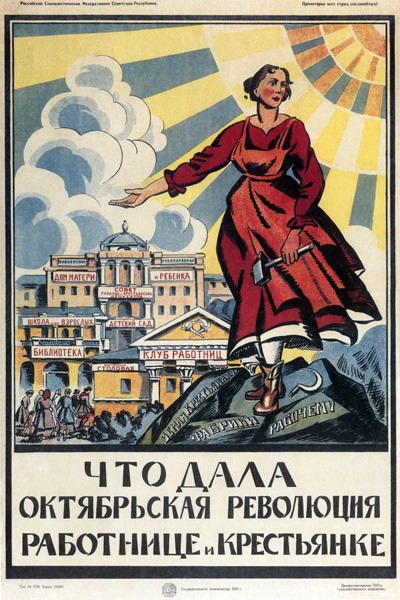
During the ‘civil war’, many women played their part in defending the gains of the October Revolution, which were under attack from counter-revolutionary forces backed by western governments. Groups of women in Petrograd heeded the call to defend the revolution, forming partisan brigades that helped repel an attack on the city by the counter-revolutionary ‘White Armies’. The poster below, from 1918, calls on women workers to take up their rifles, and shows that it is indeed possible to wear red polka dots without looking girly!

Once the counter-revolutionary forces had been defeated, many urban women recognised that even if you could get hold of them, wearing the ‘latest fashions’ would be inappropriate given the desperate economic situation created by years of world war followed by civil war. This was a time for ‘all hands to the pump’ to build the new society, not for frills & high heels. The fashion magazine below is from April-May 1917, shortly after the February revolution. Whilst the outfit on the cover has been given red accents, both it and the magazine itself, belong to the old Russia, not the emerging revolutionary Russia.
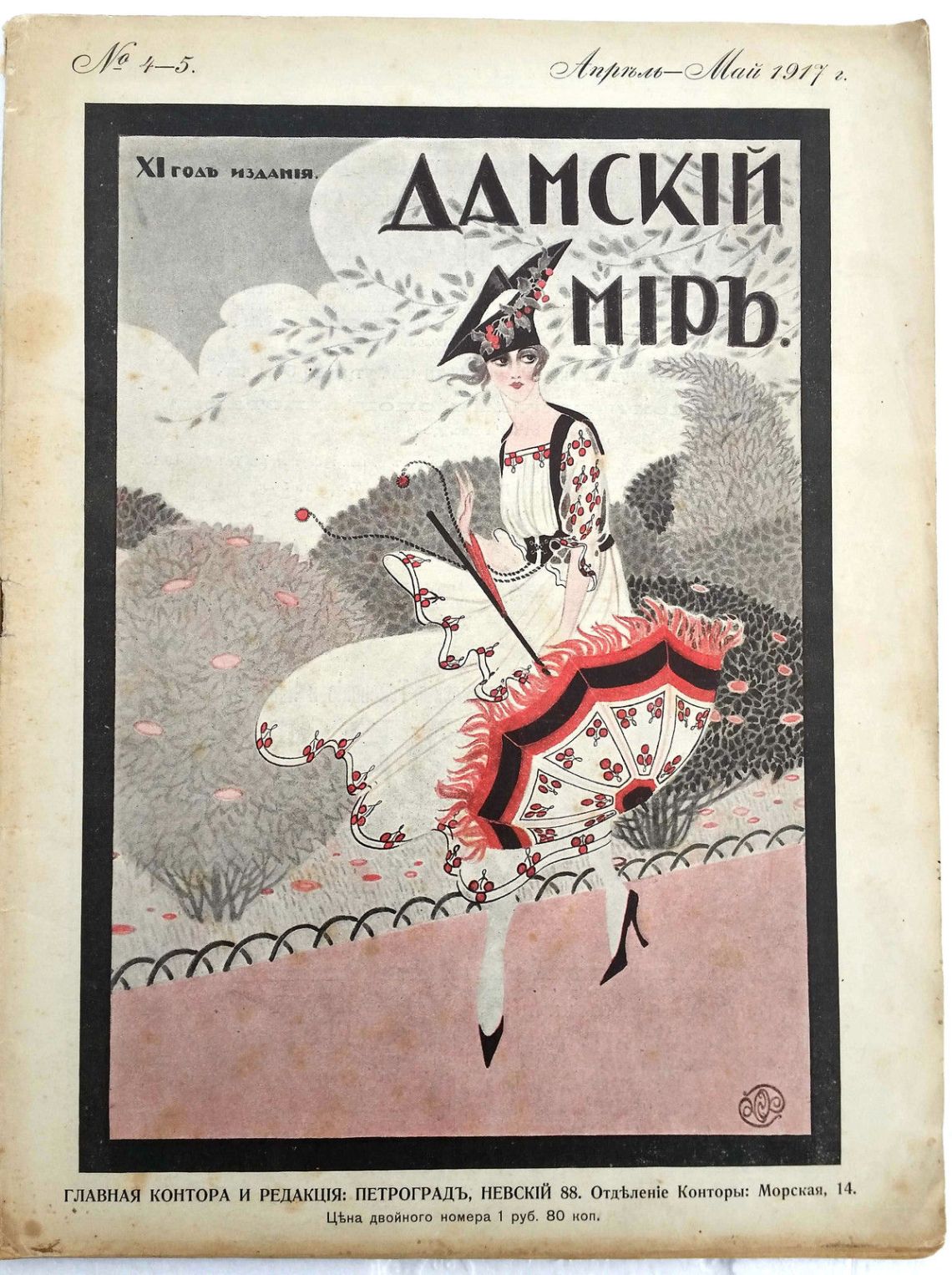
Working women needed practical clothing that didn’t restrict activity & that allowed them to project themselves as equals working alongside men. There were railways to construct & textile mills to get working again. The poster below (from 1920) shows a woman working alongside men at an anvil, making rails to build train tracks. Rebuilding the railways destroyed during the war was a priority. Everyone is depicted as wearing red, denoting common cause.
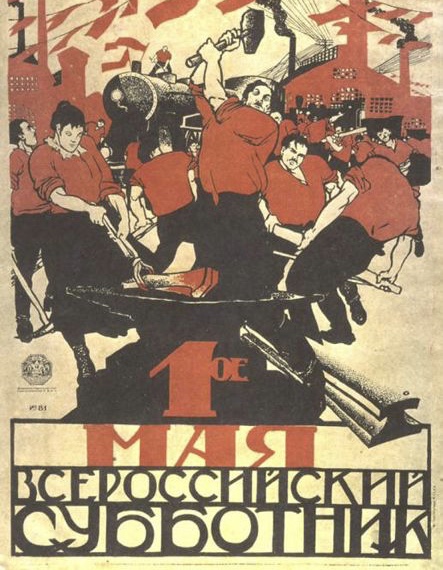
The style in which individual women (& men) dressed in the early years after the Revolution often reflected their level support for the revolutionary project, and the kind of society they wanted to build. Looking like a proletarian was the new black, & for those less committed to Russia’s new direction, it could be the safer option. People who owned expensive pre-revolution fashions avoided wearing them in public for fear of provoking hostility.
Women’s clothing was soon to become a fierce ideological battleground between differing visions of the future. On one side would be the revolutionaries and artists who wanted to create new clothing designs fit for a new society, & on the other side, women (& men) who wanted a return to Paris fashion, and to capitalism.
Some other posts about Soviet fashion:
Soviet Chic: Revisiting 1920s Design #1

